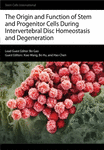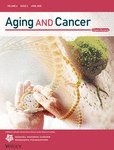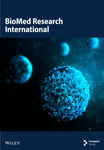Intervertebral disc degeneration (IDD) is the most common cause of back pain, which is involved in a wide range of clinical issue and imposes a significant socioeconomic burden on society. IDD contains a wide range of degenerative pathologies associated with a variety of clinical symptoms, such as paresthesia, the weakness of extremities, and back pain.
Long-term debate has focused on whether the intervertebral disc (IVD) contains the resident stem and progenitor cells essential for disc homeostasis and regeneration. Several recent studies have reported the identification of stem/progenitor cells derived from IVD tissue, including nucleus pulposus (NP), annulus fibrosus (AF), hyaline cartilaginous endplates (CEPs), and disc perichondrium around the AF, possessing cell characteristics essential for in situ tissue regeneration. In addition, many types of biocompatible material coupled with resident stem/progenitor cells in IVDs have shown impressive therapeutic effects in attenuating the progress of IDD. However, the origin, tempo-spatial distribution, heterogeneity, and function of stem/progenitor cells in IVD and the molecular and cellular mechanisms underlying intervertebral disc homeostasis and degeneration are largely unknown. With the rapid development of genetic mouse models, multiple dimensional omics at the single cell level, and the culture of ex vivo organoids, these issues will be gradually solved in the recent decade.
The aim of this Special Issue is to clarify the origin, tempo-spatial distribution, heterogeneity, and function of stem/progenitor cells to advance our understanding of the maintenance of IVD homeostasis and the treatment and prevention of IDD. We welcome both original research and review articles.
Potential topics include but are not limited to the following:
- Identification of potential resident stem/progenitor cells in intervertebral discs, including nucleus pulposus (NP), annulus fibrosus (AF), hyaline cartilaginous endplates (CEPs), and disc perichondrium
- Clarification of the origin of resident stem/progenitor cells in intervertebral discs
- Potential therapeutic effects of resident stem/progenitor cells in IVD
- Establishing potential candidate markers for resident stem/progenitor cells in intervertebral discs using genetic mouse models
-
Discovering potential therapeutic methods targeting resident stem/progenitor cells in intervertebral discs, including small molecular drugs







